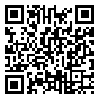Volume 9, Issue 4 (10-2021)
J. Pediatr. Rev 2021, 9(4): 347-354 |
Back to browse issues page
Download citation:
BibTeX | RIS | EndNote | Medlars | ProCite | Reference Manager | RefWorks
Send citation to:



BibTeX | RIS | EndNote | Medlars | ProCite | Reference Manager | RefWorks
Send citation to:
Singaravelu V, U M. Jigsaw Teaching VS Small Group Teaching: A Comparative Study Among Phase 3 MBBS Students in the Department of Paediatrics. J. Pediatr. Rev 2021; 9 (4) :347-354
URL: http://jpr.mazums.ac.ir/article-1-408-en.html
URL: http://jpr.mazums.ac.ir/article-1-408-en.html
1- Department of Paediatrics, Malla Reddy Institute of Medical Sciences, Suraram, Hyderabad, India. , viddu7@gmail.com
2- Department of Physiology, All India Institute of Medical Sciences, Bibinagar, Hyderabad, India.
2- Department of Physiology, All India Institute of Medical Sciences, Bibinagar, Hyderabad, India.
Abstract: (3914 Views)
Background: The traditional large group didactic lectures have many shortcomings, so small group discussions have been proposed to overcome some of these shortcomings. However, a typical Small Group Discussion (SGD) remains a mini-interactive lecture in most cases. To improve students’ participation and their better understanding, many newer teaching-learning methods have been tried. Jigsaw teaching method, a type of cooperative learning, is one of these new methods. Obviously, the usefulness of jigsaw teaching must be compared with other small group teaching methods.
Objectives: The aim of this study was to compare the effectiveness of the Jigsaw teaching technique with the small group teaching method.
Methods: A quasi-experimental study was conducted over one month in the Paediatrics Department of DM WIMS medical college. After obtaining written informed consent, 30 students were randomly selected and allocated to the SGD and jigsaw groups (15 students in each group). Four topics were taken to both the groups who were crossed over after one session (a total of eight exposures). Their post-intervention mean scores were tabulated and analyzed. The Likert scale was used to assess the students’ evaluations of the jigsaw method.
Results: The results showed that the jigsaw method had better students’ performance, which was statistically significant with a P<0.05. Also, the students’ evaluation showed that they appreciated the jigsaw teaching method, but time constraints were noted as a drawback.
Conclusions: Jigsaw teaching is an excellent small group teaching method to ensure better students’ participation and understanding and can add to our repertoire of teaching-learning methods, which Competency-Based Medical Education (CBME) warrants.
Objectives: The aim of this study was to compare the effectiveness of the Jigsaw teaching technique with the small group teaching method.
Methods: A quasi-experimental study was conducted over one month in the Paediatrics Department of DM WIMS medical college. After obtaining written informed consent, 30 students were randomly selected and allocated to the SGD and jigsaw groups (15 students in each group). Four topics were taken to both the groups who were crossed over after one session (a total of eight exposures). Their post-intervention mean scores were tabulated and analyzed. The Likert scale was used to assess the students’ evaluations of the jigsaw method.
Results: The results showed that the jigsaw method had better students’ performance, which was statistically significant with a P<0.05. Also, the students’ evaluation showed that they appreciated the jigsaw teaching method, but time constraints were noted as a drawback.
Conclusions: Jigsaw teaching is an excellent small group teaching method to ensure better students’ participation and understanding and can add to our repertoire of teaching-learning methods, which Competency-Based Medical Education (CBME) warrants.
Type of Study: Original Article |
Subject:
Pediatrics
Received: 2021/05/18 | Accepted: 2021/07/14 | Published: 2021/10/1
Received: 2021/05/18 | Accepted: 2021/07/14 | Published: 2021/10/1
Send email to the article author
| Rights and permissions | |
 |
This work is licensed under a Creative Commons Attribution-NonCommercial 4.0 International License. |









